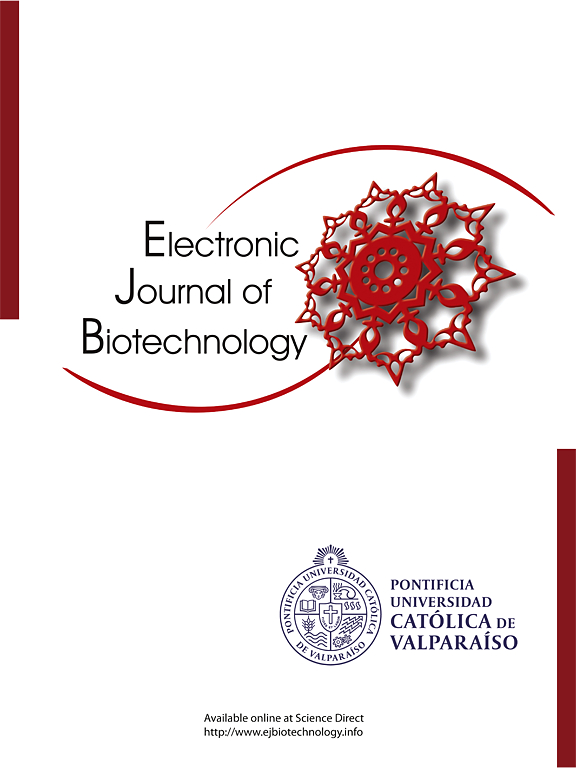Metformin mitigates potassium bromate-induced liver grievance in rat through attenuating NF-kB and PI3K/Akt pathway
IF 2.5
4区 生物学
Q3 BIOTECHNOLOGY & APPLIED MICROBIOLOGY
引用次数: 0
Abstract
Background
Metformin (MET) is a dietary polyphenolic compound that exhibits anti-inflammatory and antioxidant properties. This study evaluated the protective effects of MET in both in vitro and in vivo models against potassium bromate (KBrO3)-induced hepatotoxicity. Hepatic cells were exposed to KBrO3 with or without metformin (20, 40, and 60 µM), and cell viability and Reactive Oxygen Species levels were assessed. In vivo, rats were divided into five groups: control, KBrO3, and KBrO3 with metformin (25, 50, and 100 mg/kg). Liver and blood samples were analyzed for histological changes, oxidative stress markers, lipid peroxidation, liver enzymes, and PI3K/Akt signaling.
Results
KBrO3 exposure significantly decreased cell viability and increased ROS levels. Co-treatment with MET dose-dependently restored cell viability, with 60 µM MET achieving approximately 80% viability. Metformin also reduced ROS levels, with mean fluorescence intensity approaching control values at higher concentrations. In the in vivo study, KBrO3 exposure elevated lipid peroxidation markers, depleted antioxidant enzyme activities, and triggered oxidative stress and inflammation. Metformin significantly alleviated histological liver damage, suppressed proinflammatory cytokines, enhanced antioxidant enzyme activities, and modulated the PI3K/Akt signaling pathway to promote cell survival and reduce oxidative injury.
Conclusions
Metformin effectively protects hepatic cells against KBrO3-induced cytotoxicity by improving cell viability and reducing Reactive Oxygen Species levels. Metformin successfully mitigates KBrO3-induced hepatic injury by reducing oxidative stress, modulating inflammatory pathways (NF-kB), and regulating the PI3K/Akt signaling cascade, offering molecular evidence of its hepatoprotective effects.
How to cite: Ma B, Zheng S, Xie N, et al. Metformin mitigates potassium bromate induced liver grievance in rat through attenuating NF-kB and PI3K/Akt pathway. Electron J Biotechnol 2025;76. https://doi.org/10.1016/j.ejbt.2025.03.002.

二甲双胍通过减弱NF-kB和PI3K/Akt通路减轻溴酸钾诱导的大鼠肝脏不适
二甲双胍(MET)是一种膳食多酚类化合物,具有抗炎和抗氧化特性。本研究在体外和体内模型中评估MET对溴酸钾(KBrO3)诱导的肝毒性的保护作用。将肝细胞暴露于含或不含二甲双胍(20、40和60µM)的KBrO3中,评估细胞活力和活性氧水平。在体内,将大鼠分为5组:对照组、KBrO3组和二甲双胍组(25、50和100 mg/kg)。分析肝脏和血液样本的组织学变化、氧化应激标志物、脂质过氧化、肝酶和PI3K/Akt信号。结果skbro3暴露显著降低细胞活力,升高ROS水平。与MET剂量依赖的共处理可恢复细胞活力,60µM MET可达到约80%的活力。二甲双胍也降低了ROS水平,高浓度时平均荧光强度接近控制值。在体内研究中,KBrO3暴露会升高脂质过氧化标志物,降低抗氧化酶活性,引发氧化应激和炎症。二甲双胍可显著减轻组织学肝损伤,抑制促炎细胞因子,增强抗氧化酶活性,调节PI3K/Akt信号通路,促进细胞存活,减轻氧化损伤。结论二甲双胍通过提高细胞活力和降低活性氧水平,有效保护肝细胞免受kbro3诱导的细胞毒性。二甲双胍通过降低氧化应激、调节炎症通路(NF-kB)和调节PI3K/Akt信号级联,成功减轻了kbro3诱导的肝损伤,为其肝保护作用提供了分子证据。引用方式:马斌,郑生,谢宁,等。二甲双胍通过减弱NF-kB和PI3K/Akt通路减轻溴酸钾诱导的大鼠肝脏不适。中国生物医学工程学报(英文版);2009;16。https://doi.org/10.1016/j.ejbt.2025.03.002。
本文章由计算机程序翻译,如有差异,请以英文原文为准。
求助全文
约1分钟内获得全文
求助全文
来源期刊

Electronic Journal of Biotechnology
工程技术-生物工程与应用微生物
CiteScore
5.60
自引率
0.00%
发文量
50
审稿时长
2 months
期刊介绍:
Electronic Journal of Biotechnology is an international scientific electronic journal, which publishes papers from all areas related to Biotechnology. It covers from molecular biology and the chemistry of biological processes to aquatic and earth environmental aspects, computational applications, policy and ethical issues directly related to Biotechnology.
The journal provides an effective way to publish research and review articles and short communications, video material, animation sequences and 3D are also accepted to support and enhance articles. The articles will be examined by a scientific committee and anonymous evaluators and published every two months in HTML and PDF formats (January 15th , March 15th, May 15th, July 15th, September 15th, November 15th).
The following areas are covered in the Journal:
• Animal Biotechnology
• Biofilms
• Bioinformatics
• Biomedicine
• Biopolicies of International Cooperation
• Biosafety
• Biotechnology Industry
• Biotechnology of Human Disorders
• Chemical Engineering
• Environmental Biotechnology
• Food Biotechnology
• Marine Biotechnology
• Microbial Biotechnology
• Molecular Biology and Genetics
•Nanobiotechnology
• Omics
• Plant Biotechnology
• Process Biotechnology
• Process Chemistry and Technology
• Tissue Engineering
 求助内容:
求助内容: 应助结果提醒方式:
应助结果提醒方式:


